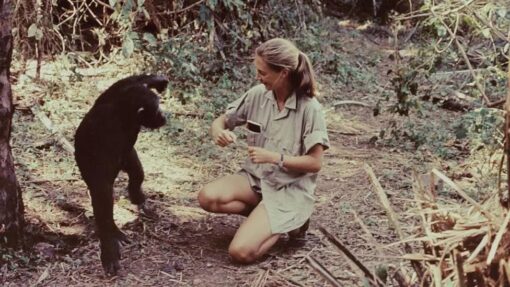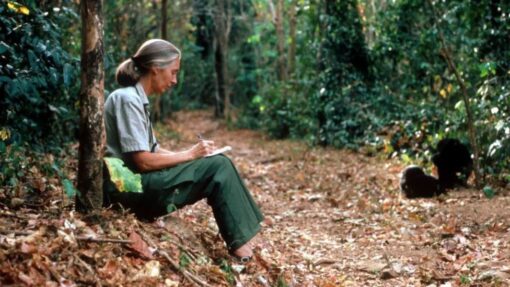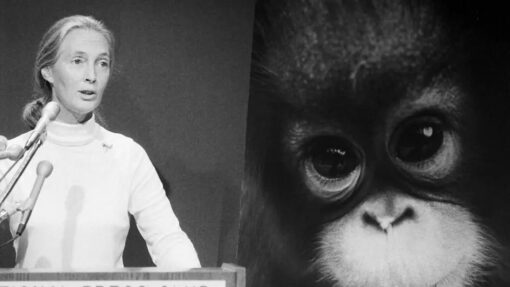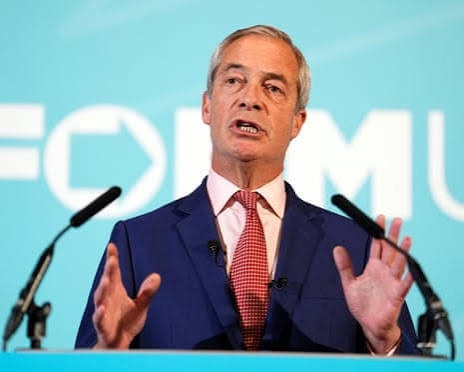Dame Jane Goodall, the pioneering conservationist and primatologist, has died at the age of 91, leaving behind a remarkable legacy that reshaped science and inspired generations.
Known across the world as the foremost expert on chimpanzees, Dame Jane Goodall revolutionised our understanding of animal intelligence and behaviour, while tirelessly campaigning for the protection of wildlife and the environment.
According to a statement from the Jane Goodall Institute, she died of natural causes while on a speaking tour in California. Her passing marks the end of a life dedicated to science, conservation, and hope for the planet.
For over six decades, Dame Jane Goodall not only revealed the deep connections between humans and chimpanzees but also became one of the most influential voices in global environmental activism.

Revolutionising Science
Born in London in 1934, Dame Jane Goodall developed a fascination with animals from an early age, inspired by childhood books such as The Story of Dr Doolittle and Tarzan.
Her life changed dramatically in her twenties when she travelled to Kenya and met the renowned anthropologist and primatologist Louis Leakey.
Despite lacking formal scientific training, Leakey recognised her potential and arranged her first research expedition to Gombe Stream National Park in Tanzania in 1960.
It was there that she made a discovery that would transform science forever. Observing a chimpanzee named David Greybeard, she recorded the animal using a stick to extract termites from a mound.

Until then, tool use was believed to be an exclusively human trait. Her findings shattered this assumption, bridging the perceived gap between humans and animals and sparking a revolution in evolutionary science.
Over the years, she revealed that chimpanzees form complex social bonds, exhibit emotions, and even wage territorial wars. Her groundbreaking approach, which included naming the chimpanzees she studied and forming close relationships with them, was initially criticised by some scientists. But her methods, once unconventional, became a cornerstone of modern primatology.
From Researcher to Global Advocate
The world came to know her work through publications in leading journals and a National Geographic feature in 1965, which propelled her into the global spotlight.
A documentary narrated by Orson Welles further cemented her reputation, showing her engaging with young chimpanzees in a way that challenged traditional scientific detachment.
After years in the field, Dame Jane Goodall transitioned into activism. Disturbed by the plight of chimpanzees kept in captivity or used for medical testing, she became a leading advocate for their rights. She went on to campaign against deforestation and climate change, broadening her mission to encompass the survival of ecosystems and the future of humanity itself.

Her Jane Goodall Institute, founded in 1977, spearheaded global projects that combined wildlife protection with community development, emphasising the interconnectedness of human wellbeing and environmental health. Through initiatives such as Roots & Shoots, she inspired millions of young people worldwide to take action for the planet.
An International Legacy
Tributes have poured in from across the globe. The United Nations praised her as a “tireless advocate for our natural world,” while Greenpeace described her as “one of the true conservation giants of our time.” Naturalist Chris Packham called her “revolutionary” and “remarkable,” adding that losing her was a tragedy at a moment when the planet needs leaders like her most.
Her work earned her countless honours. She was appointed a Dame Commander of the Order of the British Empire in 2003 and received the U.S. Presidential Medal of Freedom in 2025, one of America’s highest civilian honours. Despite her fame, she remained committed to her cause, often saying that her greatest motivation was the desire to ensure a livable future for children.
Even into her nineties, Dame Jane Goodall continued to travel the world, giving lectures and interviews. She famously admitted that she had not slept in the same bed for more than three weeks since 1986, reflecting the relentless pace of her advocacy. Just a week before her death, she appeared on stage in New York, still passionately championing conservation.
Her Vision for the Future
Throughout her life, Dame Jane Goodall was unafraid to confront humanity with hard truths. She frequently warned of the ongoing “sixth great extinction” and urged immediate action to restore forests, protect endangered species, and fight climate change. Yet she balanced urgency with optimism, encouraging hope and resilience even in the face of daunting challenges.
When asked in 2024 what kept her motivated, she replied: “Surely people want a future for their children.” That simple but profound statement captured the essence of her life’s work: a blend of science, compassion, and an unyielding belief in humanity’s potential to change.
A Lasting Impact
The story of Dame Jane Goodall is more than the biography of one woman. It is the story of how curiosity, courage, and compassion can transform the world. From the forests of Tanzania to the halls of the United Nations, she demonstrated that science and empathy are not opposites but partners in the quest to protect life on Earth.
Her legacy lives on in the millions she inspired, the scientific breakthroughs she achieved, and the conservation movements she helped ignite. In remembering her, we are reminded of the responsibility we share to care for the planet and its inhabitants.
Dame Jane Goodall’s life was a testament to the power of passion and perseverance. Though she has left this world, her voice and vision will continue to echo, urging humanity to act with urgency, wisdom, and hope.
More news at Swiftreportnow


